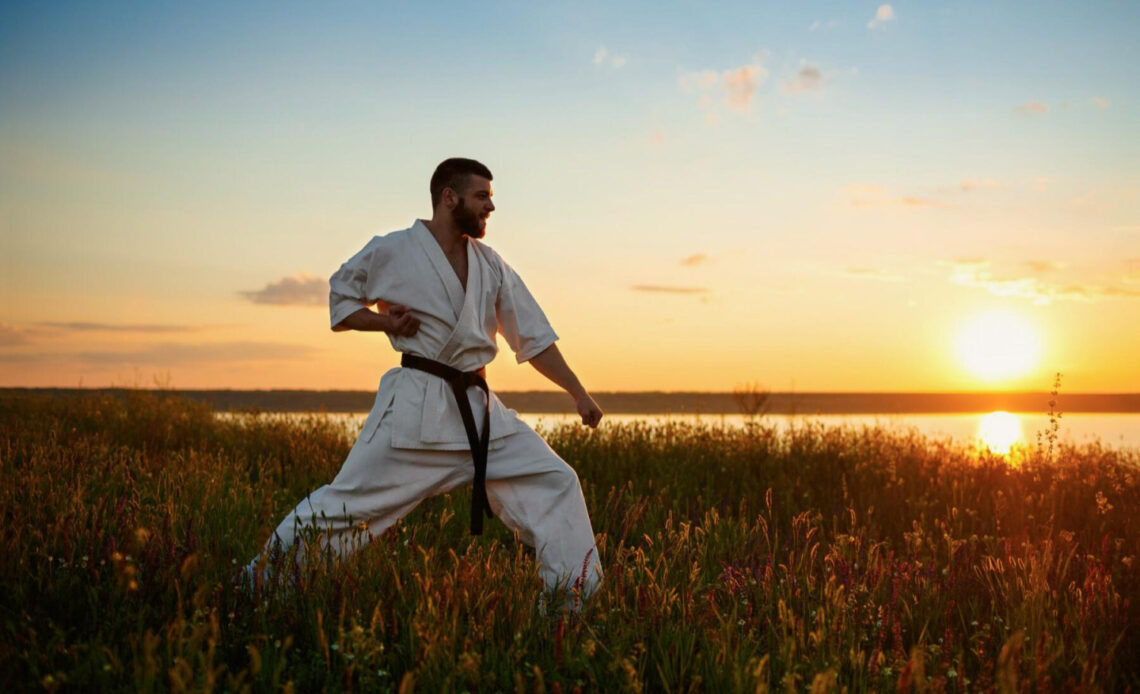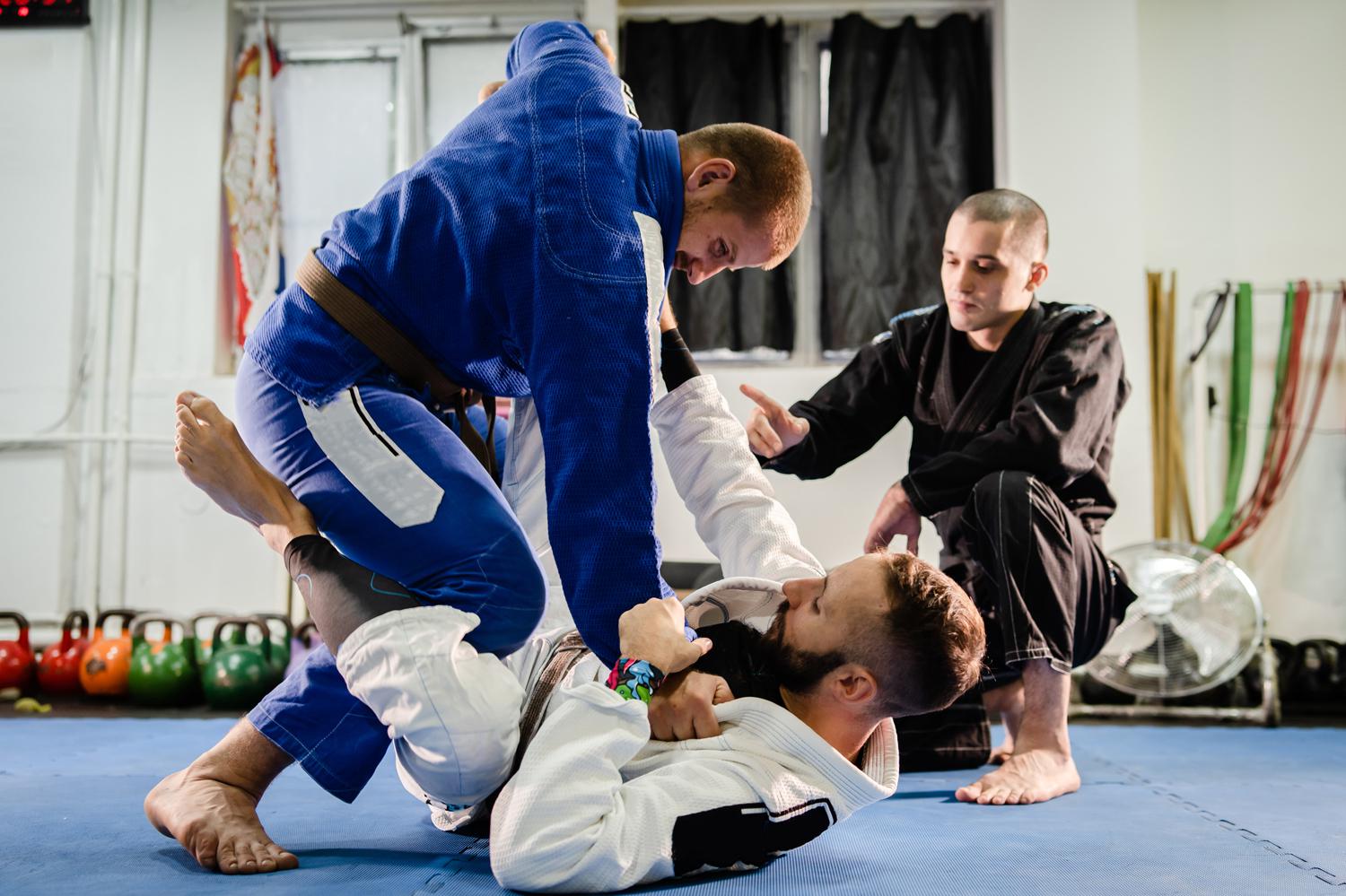
- What is this
- Who is it suitable for?
- Who is it not suitable for?
- Kinds
- Basic techniques
- Belt system
- How does it affect a person?
- How to start practicing
What is Jiu Jitsu
Jujutsu (in Japanese “ju-jitsu” – “soft art”) is a Japanese martial art and self-defense system. Instead of brute force, jiu-jitsu emphasizes technique and balance. It is important to carefully consider the techniques used in order to knock down the opponent, take control and win.
Jiu-jitsu is often compared to chess, as it involves strategy – using your weight and movement to outwit your opponent. You might try grabbing his arm and twisting it so he submits, for example, or wrapping your legs around his neck. The mind and body work in tandem in jiu-jitsu, so it’s a great way to challenge yourself mentally and physically.
Who is Jiu-Jitsu Suitable for?
- For those wishing to improve their physical fitness. Jiu-jitsu starts with the basics: you can start practicing at any age and with any level of training. For children, jiu-jitsu develops coordination and discipline, helps them release energy and teaches them to interact with each other. For adults, it helps relieve stress, maintain flexibility and strength.
- For those looking for an effective self-defense system. Japanese martial arts are especially useful for women, who may be smaller and weaker than their attacker, because they teach them how to defend themselves without using brute force.
- For those who like to think. Jiu-jitsu requires not only physical strength, but also strategic thinking, the ability to anticipate the opponent's actions and make quick decisions. If you like to look for unconventional moves and want to learn how to conduct a thoughtful fight, jiu-jitsu will give you this opportunity.
Who is not suitable for jiu-jitsu
If your heart is set on classic fights, jiu-jitsu is not for you. The main emphasis here is on wrestling, throws and controlling the opponent on the ground. For aggressive martial arts, you should go to boxing, kickboxing or karate.
However, despite the relative softness of the fight, it is still a martial art, which can also be dangerous. If you have problems with your joints, spine, or any chronic diseases, then intensive training and contact fighting can aggravate existing problems.
Before you begin practicing jiu-jitsu, be sure to consult with your doctor to help assess the risks.

The Origins of Jiu-Jitsu
Jiu-jitsu originated in Japan during the Sengoku period, known as the “era of warring states.” At that time, the country was constantly in conflict between various clans. Samurai needed new fighting techniques that they could use even against an armored enemy. Thus, in the province of Mimasa, jiu-jitsu was born – the art of blocking blows, taking control and immobilizing an opponent, which gradually spread throughout the country.
Each samurai clan brought its own elements to jiu-jitsu, adapting it to its needs and conditions. Some emphasized throws and painful holds, others – chokeholds and strikes. Over time, jiu-jitsu ceased to be exclusively a martial art, turning into a whole philosophy. It taught samurai not only physical skills, but also discipline, self-control, respect for the enemy. And when the time of knights in armor passed, jiu-jitsu flowed into a system of self-defense.
Jiu-jitsu has had a huge influence on the development of many modern martial arts. Judo, aikido, Brazilian jiu-jitsu – all of them have their roots in the ancient Japanese art.
Jiu-jitsu and judo: what is the difference
Judo (from the Japanese “judo” – “soft way”) is a martial art that originated from traditional jiu-jitsu, but differs from it.
Judo focuses on throws and grappling, which are often performed standing up, while jiu-jitsu includes a wider range of techniques, including grappling on the ground. Judo is an Olympic sport, and it is more about competition than about defeating an opponent.
The rules of the competition are also different. In judo, victory is awarded for a clean throw that puts the opponent on his back, or by accumulated points for less effective throws and holds. In jiu-jitsu, you win by performing a painful or choke hold, or by points for control and positional advantage.

Types of Jiu-Jitsu
Japanese Jiu-Jitsu
This is a classic jiu-jitsu that has retained many traditional techniques and principles. It is a system of self-defense and personal development that includes philosophical principles, ethics and strategy.
Traditional Jiu-Jitsu includes the following disciplines:
- A mistake — pre-practiced sequences of techniques that are performed in pairs. Kata help to hone movements, develop a sense of timing and distance, and understand the principles of jiu-jitsu.
- Randors – free practice with a partner. Randori develops the ability to adapt to the opponent's actions, make quick decisions and act effectively.
- Colors — sparring with limitations, which allow you to test your skills in conditions close to a real fight. Fights help develop self-confidence, endurance and the ability to control emotions.
Brazilian Jiu-Jitsu
In Brazilian jiu-jitsu (abbreviated BJJ or BJJ), the emphasis is on controlling the opponent on the ground – that is, on the ground – using various techniques, including painful and choking techniques.
BJJ originated in Brazil in the early 20th century thanks to the Japanese master Mitsuyo Maeda. He was one of the best students of the founder of judo, Jigoro Kano, and traveled the world demonstrating his skills and teaching. In 1914, he arrived in Brazil, where he met the Gracie family and began teaching his eldest son, Carlos, wrestling techniques. He passed the art on to his brothers, and soon the Gracie family became known for their wrestling skills. They adapted and modified judo techniques, placing an emphasis on the ground. Carlos' younger brother, Helio Gracie, played a key role in the development of BJJ. He developed techniques that allowed him to defeat larger and stronger opponents using chokes and leverage (pressure on the joints).
The Gracie family opened a BJJ academy, and its students opened their own schools, spreading the art throughout Brazil and beyond.
Although Brazilian Jiu-Jitsu has its roots in Japan, it has some differences:
- Emphasis on the ground: BJJ philosophy states that a smaller and weaker person can control a larger opponent with proper ground technique.
- Evolution technique: BJJ is a living and dynamic art, with new techniques constantly emerging. Japanese jiu-jitsu is more conservative and retains traditional approaches.
- Less emphasis on punches: In Brazilian Jiu-Jitsu there are almost no strikes, while in Japanese Jiu-Jitsu they can be present to a greater or lesser extent depending on the style.
Basic Jiu-Jitsu Techniques
As a rule, the battle follows a standard pattern consisting of four phases:
- Get close to your opponent and establish control in a standing position.
- Take the fight to the ground.
- Take control of the enemy on the ground.
- Finish the fight with a painful or choke hold.
This plan corresponds to the key elements of jiu-jitsu:
- throws – techniques for taking an opponent to the ground;
- positions – body positions on the ground that give an advantage;
- movements — methods of movement on the ground and transitions between positions;
- painful — techniques for influencing joints;
- suffocating – breathing restriction techniques;
- levers – various options for isolating limbs;
- blows – attacks in a standing position.
The Belt System in Jiu-Jitsu
Jiu-jitsu belts represent the practitioner's experience. Each belt symbolizes…
